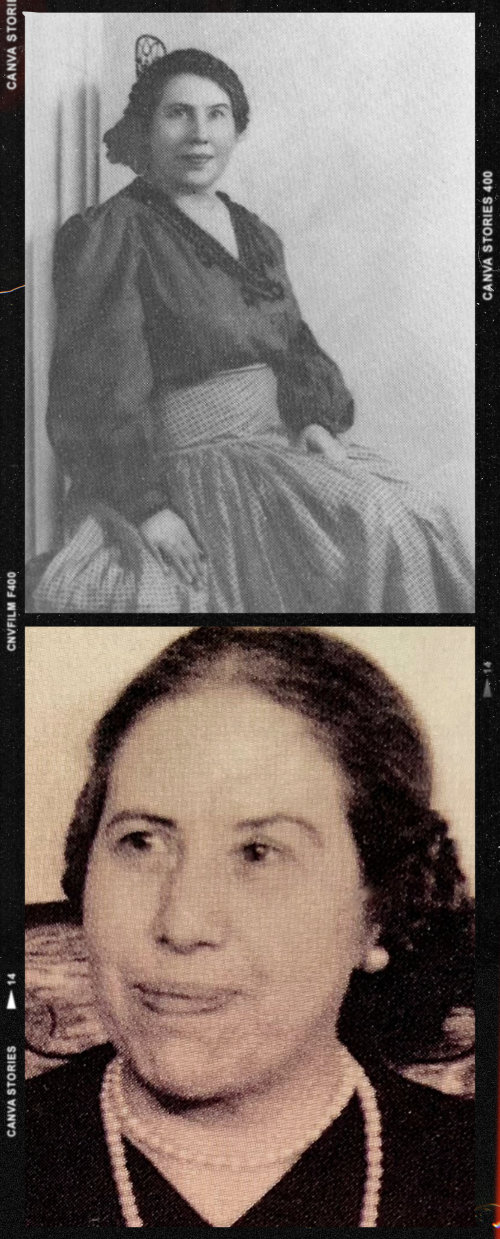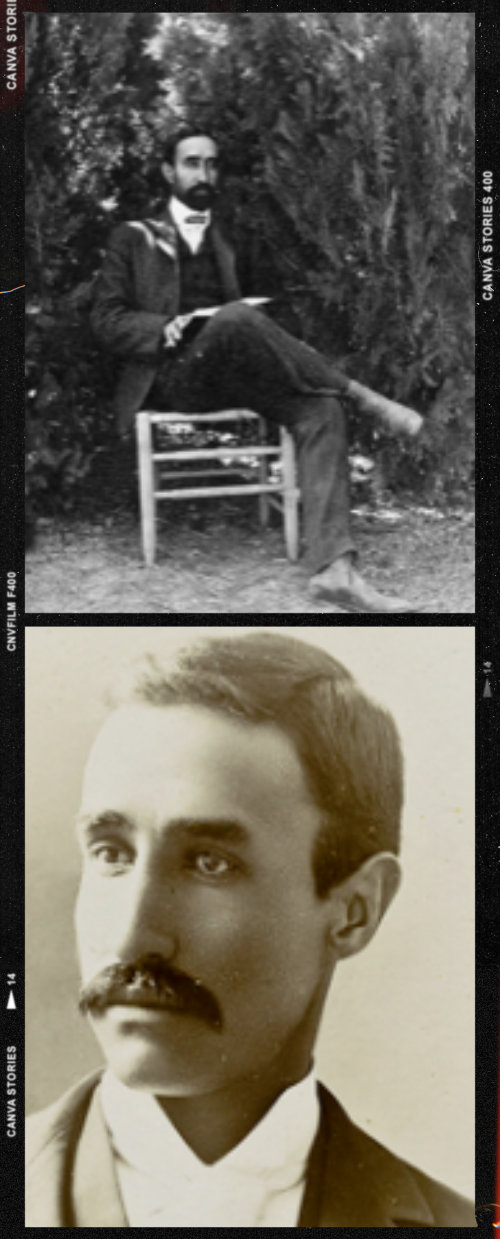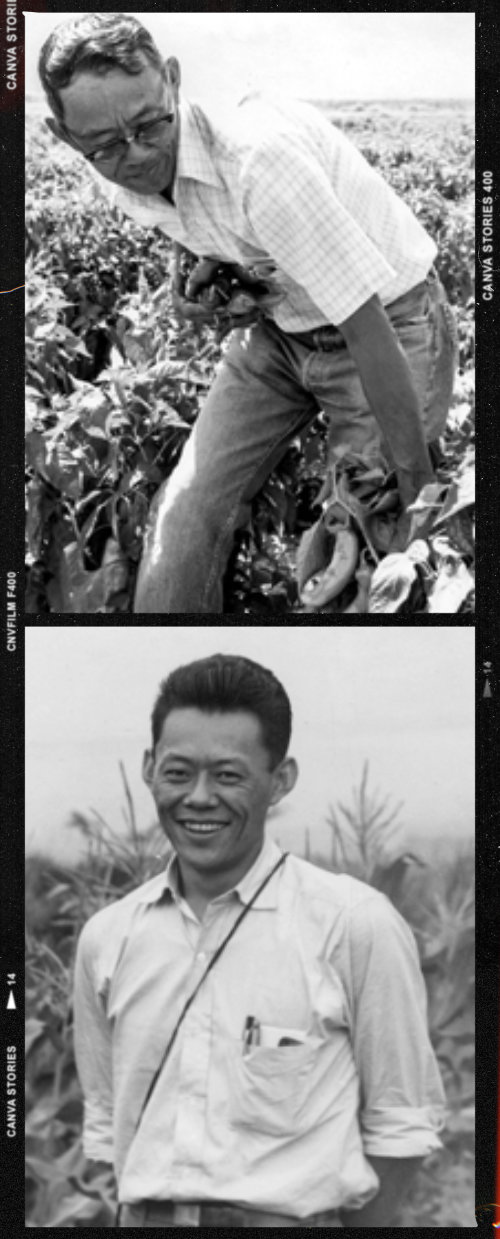the passion and expertise of
NM Chile Heroes
New Mexico chile is the product of the passion, hard work, and innovation of New Mexican chefs, chile breeders, nutritionists, and more. These, and many more, heroes are responsible for the spicy delight we all love and enjoy daily here in NM.
1894–1991
Fabiola Cabeza de Baca
A published author introducing New Mexico cuisine to the nation.
Fabiola Cabeza de Baca broke barriers as a published author, introducing New Mexico cuisine to the nation and chronicling the state’s heritage in beloved books, stories and recipes.
Working as an New Mexico State University Extension agent and author, she was an advocate for what makes our region special. Her books received national attention, and Americans became aware of the unique cultures and foods of New Mexico, especially chile.
Historic Cookery, published in 1931, shared traditional recipes from New Mexico – one of the first cookbooks that included recipes for chile sauce!
The Good Life: New Mexico Traditions and Foods (1949), put these recipes in the context of region, family and community, telling the story of a fictional family, the Turrietas.
We Fed Them Cactus (1954) describes Fabiola’s growing up on a ranch. It includes tales from El Cuate, the camp cook.

1872–1948
Fabián García
A brilliant plant breeder acclaimed as the father of America’s chile industry.
Fabian Garcia was a brilliant plant breeder acclaimed as the father of America’s chile industry. García, working at New Mexico State University, developed new varieties of chile peppers, including green chiles that were mild enough to be enjoyed by people unused to spicy foods.
After working with many chile crosses, Garcia chose the New Mexico #9, a long, green chile that became the basis of New Mexico’s commercial chile industry.
García was also devoted to helping students. Although he and his wife Julieta (née Amador) had no living children, he worked tirelessly to help students earn college degrees, often by helping them pay for tuition and living expenses, and helping them find housing. García willed part of his estate to support NMSU’s construction of a dormitory for those in need, now called García Center. “I want to help poor boys, because I know their hardships,” he explained.
García often talked about his belief that education is a powerful pathway to help students develop their highest and most noble nature, to become “not only keen, sagacious and shrewd but broadminded, evenly and sympathetically balanced, tolerant, sweet and charitable.”

1923–1988
Roy Nakayama
A chile breeder resulting in the cultivars ‘NuMex R Naky’, ‘NuMex 6-4’, ‘Española Improved’, and ‘NuMex Big Jim’.
Building on the accomplishments of Fabián García, Dr. Nakayama’s chile breeding contributions resulted in the cultivars ‘NuMex R Naky’, ‘NuMex 6-4’, ‘Española Improved’, and ‘NuMex Big Jim’.
After the release of the Big Jim in 1975, U.S. chile consumption doubled over the next decade. It is estimated that Dr. Nakayama’s research and the chile varieties he developed continue to generate more than $10 million of income per year in New Mexico.
Roy served in WWII, was captured during the Battle of the Bulge, and spent seven months in a German prison. After returning to the U.S., he faced anti-Japanese sentiment and was initially denied re-admission to college. With support from his professors, he earned a bachelor’s degree in botany in 1948, followed by a master’s and PhD in Iowa. He taught and researched agriculture and horticulture at New Mexico State University for thirty years before retiring in the mid-1980s.
From his family’s farm experience, Roy recognized the needs of agricultural producers. He collaborated with farmers, like James A. Lytle, to develop the Big Jim chile, which is now the basis for most green chiles used in New Mexico cuisine and holds the world record for the longest chile.

1926–2017
Priscilla Oliver Grijalva
A pioneer of nutrition helping kids and parents to prepare a wide variety of nutritious meals.
Priscilla graduated from New Mexico State University with a BA in 1951 and an MS in 1970. In 1964, she became a home economics teacher and coordinator for day care and home education in Doña Ana County. Later, she transitioned to the Peace Corps Training Program at the university, serving as both an instructor and training coordinator.
Soon, Priscilla embraced her true passion: training paraprofessionals, so that more families could get the help they needed. She pioneered the Expanded Nutrition Program in Doña Ana County and was highly skilled at helping others learn how to encourage kids and parents to prepare a wide variety of nutritious meals. She convincingly demonstrated that her methods were simple enough that even children and teens could quickly create economical, delicious meals. Soon her techniques were used across the state.
Priscilla received many awards, including the Distinguished Cooperative Extension Service Award in 1973 and Home Economist of the Year in 1985. In 1986, Las Cruces designated the week of August 18 as Priscilla Grijalva Week. Priscilla was also known for her guidance in assisting international students and program participants to get the most from NMSU.




